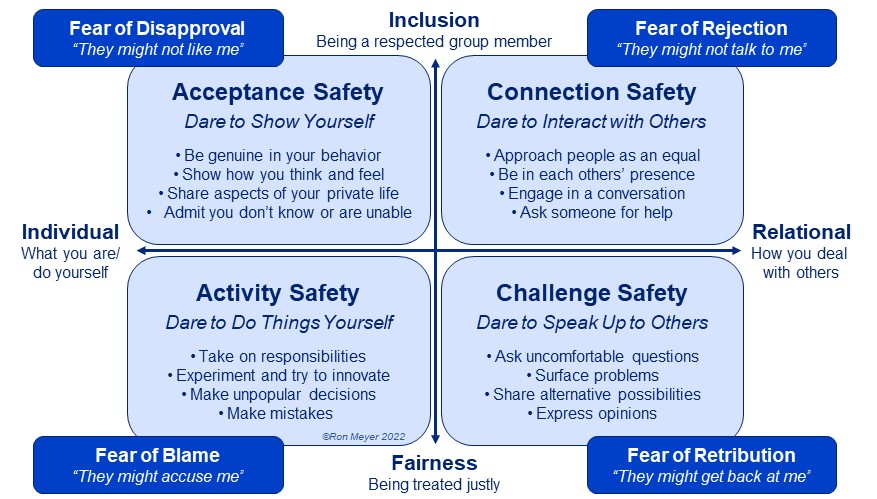People experience psychological safety when they do not fear negative social reactions, such as disapproval, rejection, blame or retribution. In a psychologically safe team or organization people feel they are not running the risk of being harshly judged by others and therefore will dare to be more outgoing and proactive, instead of withdrawn and careful.
Key to psychological safety is a sense of inclusion and fairness – inclusion means a person is fully admitted to a social group as a respected member, while fairness means that a person is treated in a reasonable and equitable manner. Generally, the more diversity in a team or organization, the more challenging it is to ensure inclusion and fairness.
The Psychological Safety Compass outlines the four main social fears that undermine people’s psychological safety, as well as the four linked types of safety that need to be created to allow people to function optimally as team members. The four types of psychological safety differ along two axes – vertically whether they focus on people’s sense of inclusion or fairness, and horizontally whether they focus on what the individual is/does or on how the individual relates to others. As a compass, the model encourages leaders to measure safety and take actions in all four directions, instead of seeing psychological safety as one monolithic phenomenon.

The four related types of psychological safety are the following: